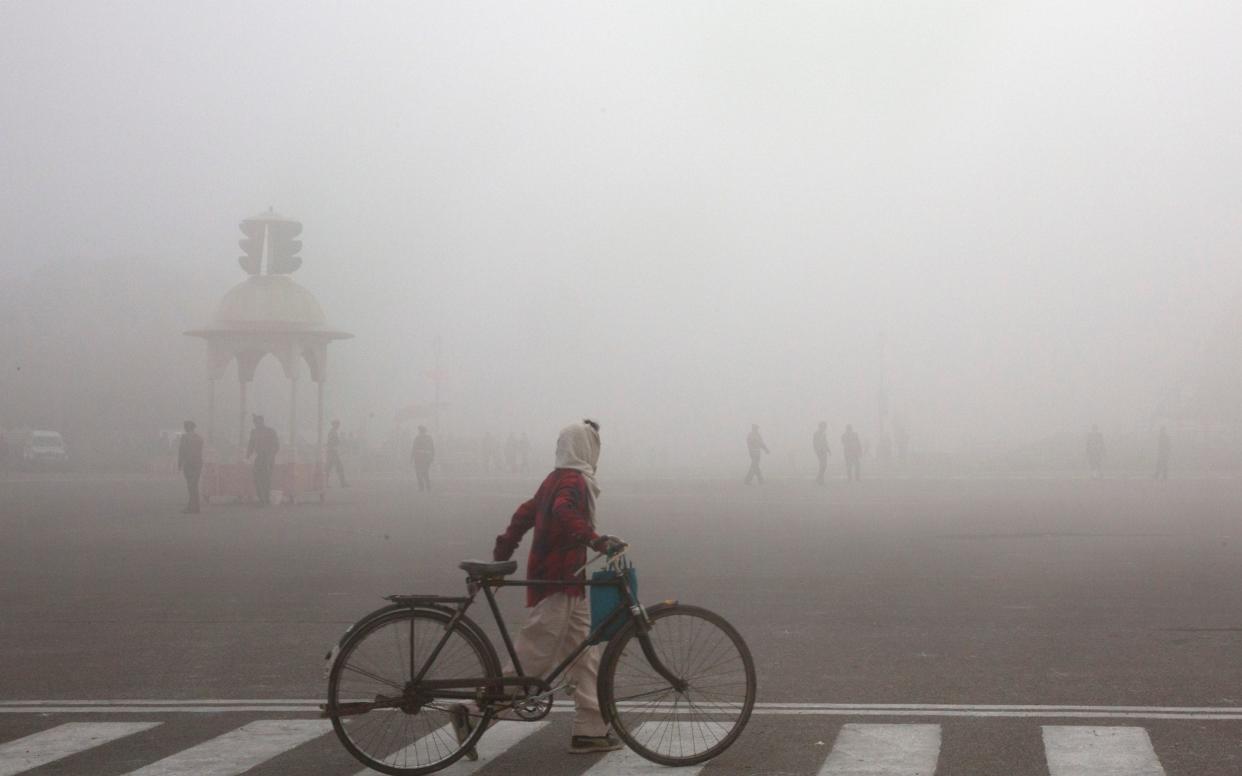India government ordered to pay residents compensation for enduring toxic smog

India's state governments must pay residents compensation if they fail to provide clean air and water, the country's Supreme Court has has ruled.
India’s capital has endured record-breaking levels of air pollution over the past two months.
Its air quality index – which measures the concentration of air pollutants such as sulfur dioxide and particulates – has regularly exceeded the safe level set by the World Health Organization more than tenfold since the beginning of November.
Despite introducing an odd-even number plate rule to limit the number of cars on its roads, activists argued this wasn’t enough, with the air quality index in the city remaining at 339 on Monday.
“We urge governments to speed up the adoption of renewable energy and electric mobility, public and commercial, to help put an end to the pollution crisis and risk to human health,” said Jarnail Singh, the India Director of The Climate Group.
The judicial court has also ordered the Delhi government to come up with a plan to install two giant air purification towers in the city over the next ten days.

A report published in April by the Health Effects Institute found that air pollution contributes to more than 1.2 million deaths a year in India, more than caused by smoking.
Delhi residents told the Telegraph the thick black smog which has enveloped their city is also causing a range of everyday health problems including sickness and headaches.
“Every time I leave the house I become dizzy and I have been suffering with fever for many weeks now,” said Akshay Kumar, 42, a rickshaw driver from the neighbourhood of Majnu-ka-tilla.
The air quality in Delhi deteriorates rapidly in October when farmers in the two neighbouring states of Haryana and Punjab start burning an estimated 35 million tonnes of crop waste, known as stubble.
Farmers believe it creates a free fertiliser and cuts the time between harvests. Other contributing factors to the alarming seasonal spike in air pollution include the lighting of fires by Delhi’s slum-dwelling population to keep warm and smoke released by Diwali fireworks.
Slowing winds and reduced rain from October onwards also means any toxic air doesn’t clear and settles in the city.
The Indian Supreme Court has been vocal in its criticism of state governments for not doing enough to fight the toxic air.
It introduced a blanket ban on the burning of stubble on November 4 but this was ignored by state governments. Politicians consider a ban on stubble burning political suicide as there are an estimated 3.6 million farmers in Haryana and Punjab alone.
“The farmers should not be penalised, rather the government should be held accountable,” said Divya Maderna, a member of the Congress Party said. She added that an outright ban on stubble burning would decimate the livelihoods of farmers and called for them to be compensated.
It is thought the ignoring of the Supreme Court’s prior demand on stubble burning has led to this more hardline regulation.
Justice Arun Mishra said that citizens in the worst-affected parts of Delhi would rather be “finished off with explosives” than suffer a slow, painful death from an ailment related to its pollution, such as lung disease. “We have become a laughing stock,” he said.

“The government cannot provide clean air and water to the citizens in its capital city. What is the point of all this development? What is the point of being a world power?”
Mr Mishra ruled the state governments had just six weeks to explain why they shouldn’t be held accountable for the pollution or would be fined.
Research into whether Delhi’s odd-even vehicle system has been effective is inconclusive but the Supreme Court hopes the construction of two pollution towers – in effect huge air purifiers – could curb air pollution.
The Chinese government recently unveiled a 100-metre tall pollution tower in the city of Xi’an which produces more than 10 million cubic metres of clean air a day. Researchers working on the towers say the amount of fine particles ha fallen by 15 per cent since its launch.
Prime Minister Narendra Modi is yet to comment directly on the on-going pollution crisis and the Delhi Government did not respond to questions from the Telegraph.
Protect yourself and your family by learning more about Global Health Security

 Yahoo News
Yahoo News 
